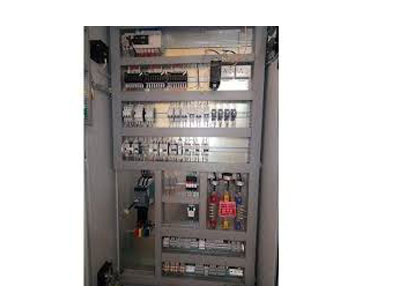What Is The Role Of SCADA In Industrial Automation?
Key Takeaway
SCADA, or Supervisory Control and Data Acquisition, plays a vital role in industrial automation by enabling real-time monitoring and control of processes. It combines software and hardware to oversee operations locally or remotely. SCADA systems help organizations control processes, gather and process real-time data, and interact with various devices like sensors, pumps, and motors through human-machine interface (HMI) software.
Additionally, SCADA systems are essential for recording events, storing data in log files or databases, and analyzing historical data for reports and long-term decision-making. Industries such as manufacturing, transportation, food and beverage, electric utilities, and oil and gas use SCADA systems for tasks ranging from controlling assembly lines to monitoring remote equipment. This helps improve efficiency, safety, and overall decision-making in complex industrial operations.
Enhancing Process Efficiency Through Real-Time Monitoring
One of the main roles of SCADA in industrial automation is its ability to monitor processes in real-time. By gathering data from sensors and field devices, SCADA provides operators with up-to-date insights into every aspect of the operation. This constant flow of information allows for immediate detection of anomalies or inefficiencies. Operators can promptly adjust parameters, prevent system overloads, and optimize performance, leading to smoother and more efficient processes. With real-time monitoring, industries can also improve the quality of the final product, ensure compliance with safety standards, and boost overall productivity.

Centralized Control of Distributed Operations
SCADA systems enable centralized control of widely distributed operations, which is particularly useful for industries like power generation, water treatment, and oil and gas. SCADA acts as the hub that consolidates data from remote locations, allowing operators to make coordinated decisions from a single control center. This centralized approach not only simplifies management but also enhances coordination between different units, leading to better alignment and streamlined workflows. With SCADA, operators can remotely start, stop, or adjust equipment, providing a level of control that would be difficult to achieve manually across dispersed sites.
Integration with IoT and Smart Technologies
The integration of SCADA with IoT (Internet of Things) and smart technologies has significantly enhanced its capability and reach. SCADA systems are increasingly using IoT-enabled devices to collect data from a wider range of sources, creating an interconnected network that can respond dynamically to changing conditions. This integration helps improve predictive maintenance, as data from IoT sensors can signal potential issues before they lead to costly breakdowns. Smart technologies, such as machine learning algorithms, can be incorporated into SCADA for advanced data analysis, leading to more precise control and better forecasting.
Data-Driven Decision Making in Industrial Automation
Another pivotal role SCADA plays in industrial automation is supporting data-driven decision-making. By collecting and processing vast amounts of real-time data, SCADA systems empower operators to make informed decisions based on accurate and comprehensive information. This leads to more efficient resource management, waste reduction, and optimal allocation of equipment and manpower. Advanced analytics can identify trends, predict potential system failures, and suggest process adjustments. When decisions are based on data rather than intuition, industries can improve efficiency, productivity, and the sustainability of their operations.
Reducing Downtime and Maintenance Costs
SCADA systems play a crucial role in reducing downtime and maintenance costs. By continuously monitoring equipment health and performance, SCADA can detect early warning signs of wear and tear or malfunction. This enables preventive maintenance strategies, which can prevent unexpected failures and extend the life of machinery. With real-time alerts and automated reporting, operators can schedule maintenance at convenient times, minimizing the disruption to operations. The ability to anticipate and address potential issues before they escalate translates to reduced repair costs and more reliable operations.
Conclusion
SCADA systems are a cornerstone of modern industrial automation, providing real-time monitoring, centralized control, and the integration of smart technologies. By enhancing process efficiency, supporting data-driven decision-making, and reducing downtime, SCADA systems help industries operate more smoothly and effectively. Its ability to centralize operations and integrate with IoT and other smart technologies makes SCADA indispensable for industries striving for optimal performance and sustainability.
